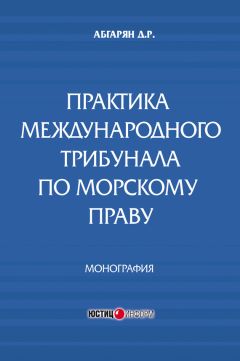Йеспер Сёренсен - Религия в сознании: обзорная статья о когнитивном религиоведении

Помощь проекту
Религия в сознании: обзорная статья о когнитивном религиоведении читать книгу онлайн
2004 “Cognitive Approaches to the Study of Religion.” In P. Antes, A.W. Geertz, and R.R. Warne (eds.), New Approaches to the Study of Religion, vol. 2 (Religion and Reason 43), Berlin: Walter de Gruyter, 347‑399.
Guthrie, S.
1993 Faces in the Clouds: A New Theory of Religion. Oxford: Oxford University Press.
2002 “Animal Animism: Evolutionary Roots of Religious Cognition.” In Pyysiäinen and Anttonen 2002:38‑67.
Hanks, W.
1990 Referential Practice: Language and Lived Space among the Maya. London: University of Chicago Press.
Hinde, R.
1999 Why Gods Persist: A Scientific Approach to Religion. London: Routledge.
Hirschfeld, L.A., and S.A. Gelman
1994 (eds.) Mapping the Mind: Domain Specificity in Cognition and Culture. Cambridge: Cambridge University Press.
Humphrey, C., and J. Laidlaw
1994 The Archetypal Actions of Ritual: A Theory of Ritual Illustrated by the Jain Rite of Worship. Oxford: Clarendon Press.
Jensen, J.S.
2002 “The Complex Worlds of Religion: Connecting Cultural and Cognitive Analysis.” In Pyysiäinen and Anttonen 2002:203‑228.
Johnson, M.
1987 The Body in the Mind: The Bodily Basis of Meaning, Imagination, and Reason. London: University of Chicago Press.
Keesing, R.
1993 “‘Earth’ and ‘Path’ as Complex Categories: Semantics and Symbolism in Kwaio Culture.” In Boyer 1993a:93‑110.
Kelemen, D.
1999 “Beliefs about Purpose: On the Origins of Teleological Thought.” In M. Corballis and S. Lea (eds.), The Descent of Mind, Oxford: Oxford University Press, 278‑294.
2004 “Are Children ‘Intuitive Theists’? Reasoning about Purpose and Design in Nature.” Psychological Science 15:295‑301.
Kelemen, D., and C. DiYanni
2005 “Intuitions about Origins: Purpose and Intelligent Design in Children’s Reasoning about Nature.” Journal of Cognition and Development 6(1):29‑31.
Keller, J.D., and F.K. Lehman
1993 “Computational Complexity in the Cognitive Modeling of Cosmological Ideas.” In Boyer 1993a:74‑92.
Ketola, K.
2004 “The Hare Krishna and the Counterculture in the Light of the Theory of Divergent Modes of Religiosity.” Method and Theory in the Study of Religion 16(3):301‑320.
Lakoff, G.
1987 Women, Fire, and Dangerous Things: What Categories Reveal about the Mind. London: University of Chicago Press.
Lakoff, G., and M. Johnson
1980 Metaphors We Live By. London: University of Chicago Press.
Lawson, E.T., and R.N. McCauley
1990 Rethinking Religion: Connecting Cognition and Culture. Cambridge: Cambridge University Press.
2002 “The Cognitive Representation of Religious Ritual Form: A Theory of Participants’ Competence with Religious Ritual Systems.” In Pyysiäinen and Anttonen 2002:153‑176.
Lienhard, P., and P. Boyer
under review “Why cultural rituals? A cultural selection model of ritualized behaviour”.
Lisdorf, A.
2004 “The Spread of Non-natural Concepts: Evidence from the Roman Prodigy Lists”. The Journal of Cognition and Culture 4(1):151‑173.
Malley, B.
1995 “Explaining Order in Religious Systems”. Method and Theory in the Study of Religion (1):5‑22.
1997 “Causal Holism in the Evolution of Religious Ideas: A reply to Pascal Boyer.” Method and Theory in the Study of Religion 9(4):389‑99.
Martin, L.H.
2004a “Towards a Cognitive History of Religions”. In C. Kleine, M. Schrimpf, and K. Triplett (eds.), Unterwegs: Neue Pfade in der Religionswissenschaft / Festschrift für Michael Pye zum 65. Geburtstag, Munich: Biblion Verlag, 75‑82.
2004b “The Cognitive Science of Religion”. Method and Theory in the Study of Religion 16(3):201‑204.
McCauley, R.N.
2001 “Ritual Memory and Emotion: Comparing Two Cognitive Hypotheses.” In J. Andresen (ed.), Religion in Mind: Cognitive Perspectives on Religious Experience, Cambridge: Cambridge University Press, 115‑140.
McCauley, R.N., and E.T. Lawson
2002 Bringing Ritual to Mind: Psychological Foundations of Cultural Forms. Cambridge: Cambridge University Press.
Paden, W.E.
2004 “Comparative Religion and the Whitehouse Project: Connections and Compatibilities?” Method and Theory in the Study of Religion 16(3):256‑265.
Pyysiäinen, I.
2001 How Religion Works: Towards a New Cognitive Science of Religion. Leiden: Brill.
2002 “Religion and the Counter-Intuitive.” In I. Pyysiäinen and V. Anttonen 2002:111‑133.
2004 Magic, Miracles and Religion: A Scientist’s Perspective. Walnut Creek, CA: AltaMira Press.
Pyysiäinen, I., and V. Anttonen
2002 (eds.) Current Approaches in the Cognitive Study of Religion. London: Continuum.
Rosengren, K.S., C.N. Johnson, and P.L. Harris
2000 Imagining the Impossible: Magical, Scientific, and Religious Thinking in Children. Cambridge: Cambridge University Press.
Sjöblom, T.
2000 Early Irish Taboos: A Study in Cognitive History. Helsinki: Comparative Religion 5: University of Helsinki, Department of Comparative Religion.
Slone, J.
2004 Theological Incorrectness: Why Religious People Believe What They Shouldn’t. Oxford: Oxford University Press.
Sørensen, J.
2000a “Theosophy: Metaphors of the Subject.” Temenos 35‑36:225‑248.
2000b “Essence, Schema and Ritual Actions: Towards a Cognitive Theory of Magic”. Ph.D. dissertation, University of Aarhus.
2002 “‘The Morphology and Function of Magic’ Revisited”. In Pyysiäinen and Anttonen 2002:177‑202.
2004 “Religion, Evolution and an Immunology of Cultural Systems”. Evolution and Cognition 10(1):61‑73.
forthcoming (a) A Cognitive Theory of Magic. Walnut Creek, CA: AltaMira Press.
forthcoming (b) “Acts that work: Cognitive aspects of ritual agency.” Cognitive Semiotics 18.
Sperber, D.
1975 Rethinking Symbolism. Cambridge: Cambridge University Press.
1996 Explaining Culture: A Naturalistic Approach. Oxford: Blackwell Publishing.
Sperber, D., D. Premack, and A.J. Premack
1995 (eds.) Causal Cognition: A Multidisciplinary Debate. Oxford: Clarendon Press.
Sperber, D., and D. Wilson
1995 Relevance: Communication and Cognition. 2nd ed. Oxford: Blackwell Publishing.
Tomasello, M.
1999 The Cultural Origins of Human Cognition. Cambridge, MA: Harvard University Press
Vial, T.
2004 “The Rubber Meets the Road: The Cognitive Science of Religion and Historical Ritualized Practices.” Method and Theory in the Study of Religion 16(3):292‑300.
Wiebe, D.
2004 “Implications of the ‘Modes Of Religiosity Theory’ for The Scientific Study of Religion.” Method and Theory in the Study of Religion 16(3):234‑240.
Whitehouse, H.
2000 Arguments and Icons: Divergent Modes of Religiosity. Oxford: Oxford University Press.
2004a Modes of Religiosity: A Cognitive Theory of Religious Transmission. Walnut Creek, CA: AltaMira Press.
2004b “Modes of Religiosity and the Cognitive Science of Religion.” Method and Theory in the Study of Religion 16(3):321‑335.
Whitehouse, H., and J. Laidlaw
2004 (eds.) Ritual and Memory: Toward a Comparative Anthropology of Religion. Walnut Creek, CA: AltaMira Press.
Whitehouse, H., and L.H. Martin
2004 (eds.) Theorizing Religions Past: Archaeology, History and Cognition. Walnut Creek, CA: AltaMira Press.
Whitehouse, H., and R.N. McCauley
2005 (eds.) Mind and Religion: Psychological and Cognitive Foundations of Religion. Walnut Creek, CA: AltaMira Press.
Примечания
1
Сайт Института познания и культуры: www.uqb.ac.uk/icc/. Сайт четырёхгодичного проекта «Религия, познание и культура» в Орхусском университете (Дания): www.teo.au.dk/en/research/current/cognition. Сайт Международной ассоциации когнитивного религиоведения: http://www.iacsr.com/.
2
Например, см.: Bering (2005); Bering and Björklund (2004); Bering and Shackelford (2004); Kelemen (1999 and 2004); Kelemen and DiYanna (2005); Rosengren et al. (2000).
3
Соотношение интерпретации и объяснения обсуждается в следующих работах: Bloch (1998); Lawson and McCauley (1990); Pyysiäinen (2004); Sperber (1996).
4
О расщепленном понятии «религия» см.: Atran (2002); Boyer (1996, 2001); Hinde (1999). Критический анализ старых теорий проводят Буайе, Лоусон и Макколи, см.: Boyer (1993a, 2001); Lawson and McCauley (1990).
5
Atran (2002); Boyer (1994, 2001); Lawson and McCauley (1990).
6
Boyer (1992, 1994, 2001).
7
Статьи, посвящённые эпидемиологии репрезентаций, содержатся в следующем сборнике: Sperber (1996). О значимости когнитивной релевантности для теории коммуникации пишут Спербер и Уилсон, см.: Sperber and Wilson (1995).
8
Встречаются и другие переводы данного термина на русский язык: «предметно-ориентированный», «проблемно-зависимый», «специфический», «содержательно специализированный» и пр. (Прим. пер.)
9
Литература, посвящённая домено-специфическому познанию, обширна, но мы можем порекомендовать следующие антологии, затрагивающие в том числе вопросы о культуре и религии: Hirschfeld and Gelman (1994); Sperber, Premack and Premack (1995).
10
Помимо Буайе (Boyer 1994, 2001, 2002), особое внимание контринтуитивным свойствам религиозных понятий уделяет Пюсиайнен (Pyysiäinen 2001, 2002, 2004). Кросс-культурные экспериментальные исследования, подтверждающие положительный отбор контринтуитивных понятий, описывают Буайе и Рэмбл, см.: Boyer and Ramble (2001).
11
Возможны другие переводы данного термина: «теория разума», «модель психического», «теория психики» и др. (Прим. пер.)
12
Теория религии, основанная на когнитивной значимости анимизма и антропоморфизма, впервые была разработана Гатри (Guthrie 1993, 2002). На важности механизма обнаружения человеческой активности [agency] для религии в дальнейшем настаивает Барретт (Barrett 2000, 2004). Теорию свехрчеловеческих агентов, обладающих неограниченным доступом к важной информации, развивает Буайе (Boyer 2001).
13
Особое внимание роли метарепрезентаций уделяют Пюсиайнен (Pyysiäinen 2004) и Атран (Atran 2002).
14
Важность сверхчеловеческой активности в ритуальных практиках подчёркивают Лоусон и Макколи, см.: Lawson and McClauley (1990); McClauley and Lawson (2002). О значении ритуального поведения для обоснования веры в специфических сверхчеловеческих агентов говорит Сёренсен, см.: Sørensen (2000b, and forthcoming a).























